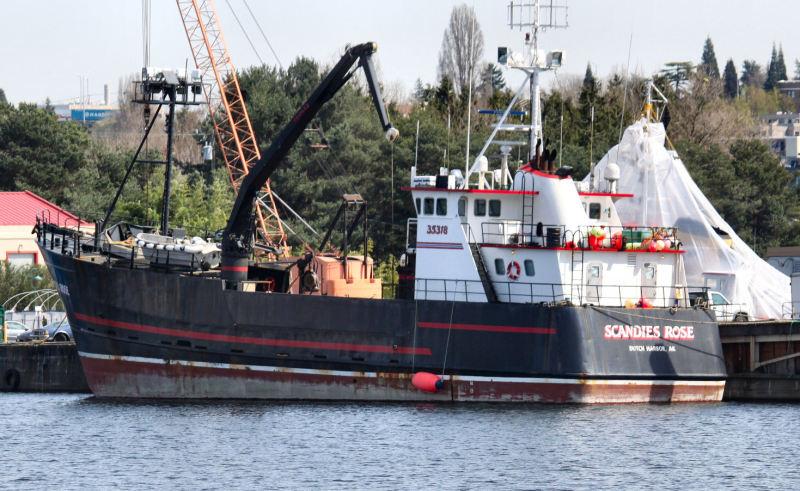The Coast Guard announced Friday it is convening a Marine Board of Investigation – its highest level of official inquiry — into the Dec. 31 sinking of the fishing vessel Scandies Rose with the loss of five of its seven crew members.
It is the second board of investigation within three years for an Alaska sinking, following the 2017 loss of the Destination, another boat that was likewise outbound for a Bering Sea crabbing trip. It sank suddenly on Feb. 11, 2017, with the loss of all six crew members.
The Destination sinking was the worst Alaska fishing accident since 2005. As with the Destination inquiry, the Scandies Rose board will be composed jointly of Coast Guard and National Transportation Safety Board officials.
Marine boards of investigation collect evidence, establish facts, and present conclusions and recommendations in their reports to the Coast Guard commandant. A board of inquiry into the 2015 sinking of the cargo vessel El Faro in a hurricane off the Bahamas, with the loss of its entire crew of 33, resulted in the Coast Guard overhauling its system for inspecting and monitoring such U.S.-flag vessels.
In the Destination case, investigators reconstructed a likely series of events to conclude that the vessel was operating under unsafe stability conditions. Those included carrying heavier crab pots that exceeded the weight used in the stability instructions; additional weight and stability stress from bait loaded high on the vessel; and excessive ice accumulations from freezing spray.
Combined with downflooding from an open hold access hatch, those were the primary factors that led to the capsizing of the boat, the board reported.
According to the Coast Guard, investigation board members looking into the Scandies Rose loss must decide:
- The cause of the casualty, including the cause of any death.
- Whether an act of misconduct, incompetence, negligence, unskillfulness, or willful violation of law committed by any individual licensed, certificated, or documented has contributed to the cause of the casualty, or to a death involved in the casualty, so that appropriate remedial action may be taken.
- Whether an act of misconduct, incompetence, negligence, unskillfulness, or willful violation of law committed by any person, including an officer, employee, or member of the Coast Guard, contributed to the cause of the casualty, or to a death involved in the casualty.
- Whether there is evidence that an act subjecting the offender to a civil penalty under that laws of the United States has been committed, so that appropriate action may be undertaken to collect a penalty.
- Whether there is evidence that a criminal act under the laws of the United States has been committed, so that the matter may be referred to appropriate authorities for prosecution.
- Whether there is need for new laws or regulations, or amendment or repeal of existing laws or regulations, to prevent the recurrence of the casualty.
While the National Transportation Safety Board participates alongside the Coast Guard in these investigations, the agency produces its own independent reports with its findings.
As information and news about the investigation become available, the Coast Guard will post those updates to its headquarters news media web pages.







